Oxford Street: How a Roman road evolved via public hangings into the most famous street of shops on the planet
To coincide with the publication of a definitive new study of Britain’s most famous retail destination, Andrew Saint looks at the history of London’s Oxford Street.

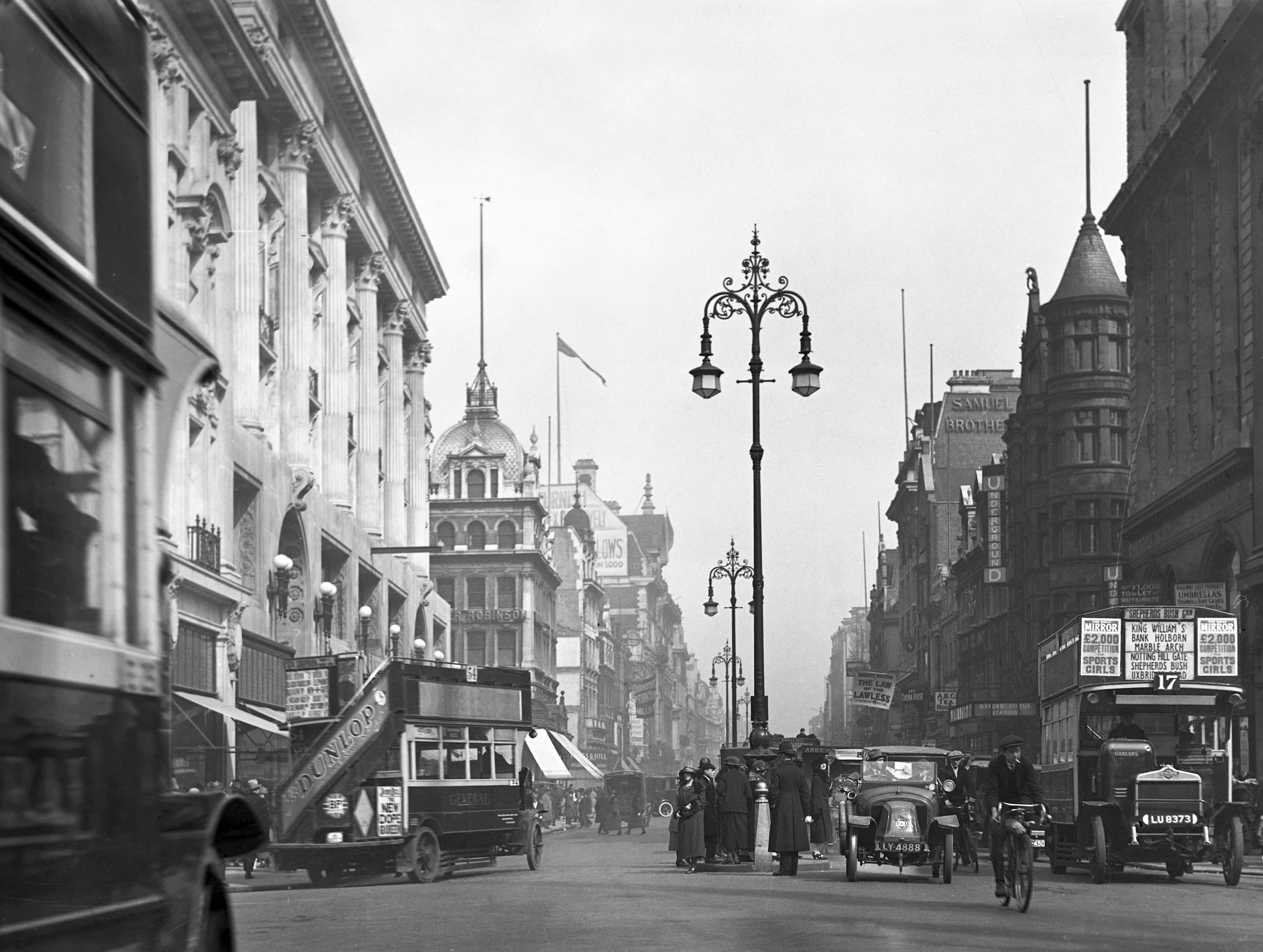
The shoppers who crowd into Oxford Street every day might not come in search of history, but they can’t escape it.
This celebrated thoroughfare first came into existence as a suburban section of the Roman road network. If you were travelling from London to the Midlands in the Roman period — or for centuries later — you would take the straight line of Holborn out of the City, deviate around Bloomsbury to avoid a marshy patch, then resume the line along the present course of Oxford Street until you came to what is now Marble Arch. From there, you would swing sharp right up Edgware Road.
Until the 18th century, this thoroughfare had a notoriously unpleasant association: at the present Marble Arch junction stood Tyburn Tree, the gallows, established by at least 1196, that came to serve as London’s chief place of execution.
The frequent hangings became popular festivals. Crowds followed the carts of condemned on the long march from Newgate, sharing in the ritual last drink by St Giles in the Fields and getting drunker all the way. Order was usually maintained on the outward journey, but after the event there was a great release of emotion and often a destructive rampage.
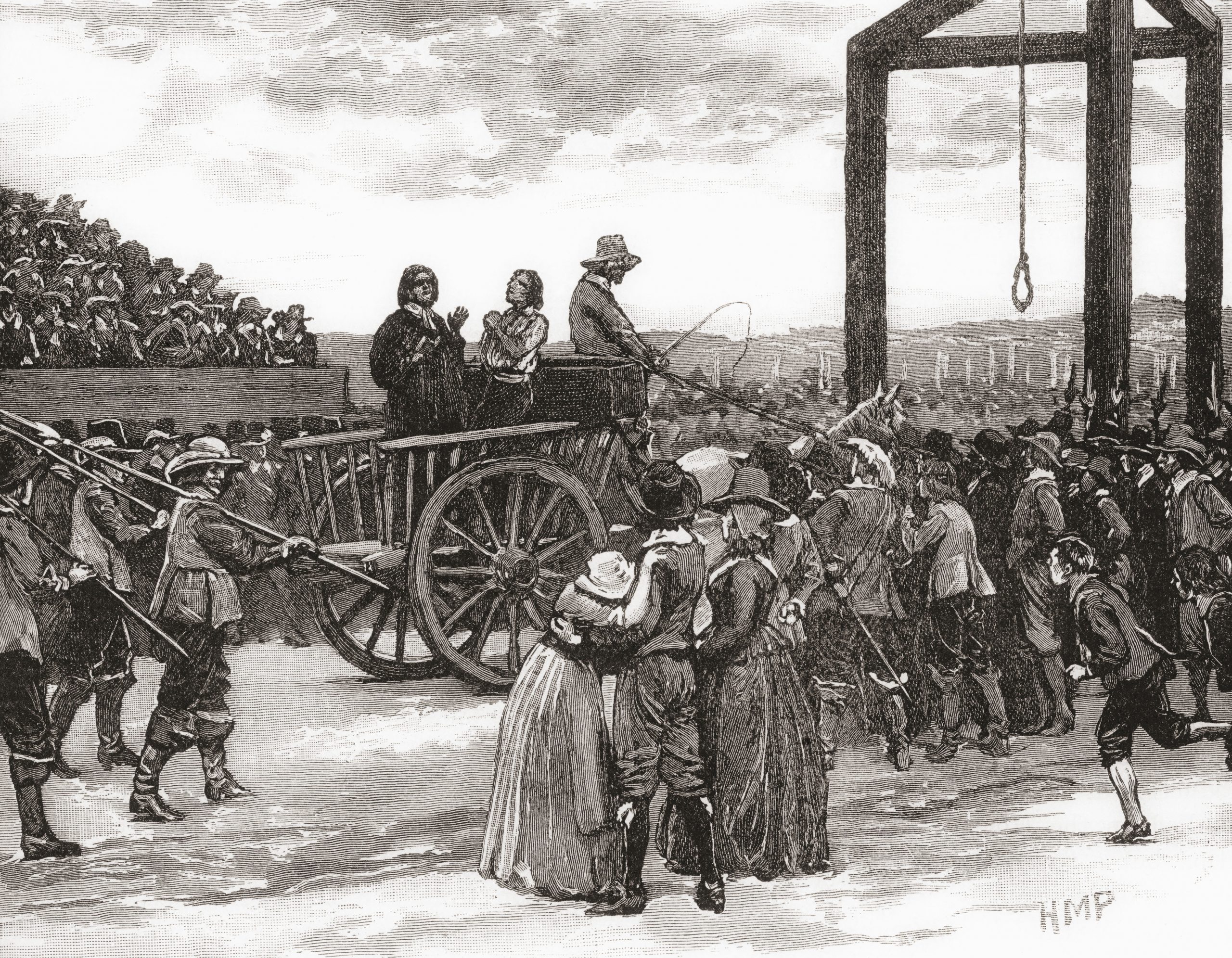
Oxford Street in those days was called Tyburn Road, after a brook that crossed the road near the line of South Molton Street (there is still a dip in the road at that point).
A tiny Tyburn hamlet existed nearby and even a church, given up as early as 1400 because it was isolated and vulnerable. The road itself was rutted by carts and drovers struggling along. The antiquarian writer Thomas Pennant (1726–98) recalled from his childhood ‘a deep hollow road, and full of sloughs: with here and there a ragged house, the lurking-place of cut-throats’.
Three separate pounds along its length housed animals on the move or strays. There were also numerous low-life hostelries — such as the Hog in the Pound, where the landlady Catherine Hayes was involved in the murder of her husband in 1726 and burnt for the crime at Tyburn — and venues for rough games popular in London suburbs. In the 1720s, for example, the famous bare-knuckle boxer James Figg created an ‘amphitheatre’ (probably a covered ring) ‘joyning to his house at the sign of the City of Oxford in Oxford Road’.
Exquisite houses, the beauty of Nature, and how to get the most from your life, straight to your inbox.
By Figg’s time, the frontage was well on its way to filling up with houses, as London pressed compulsively westwards. Soho at the street’s eastern end took the lead. The big push came in George I’s reign, when three major West End squares sprang up behind Oxford Street: Hanover Square and Grosvenor Square in Mayfair to its south and Cavendish Square in Marylebone to its north.
Cavendish Square became the fulcrum of the fashionable Cavendish-Harley, later Portland and, today, Howard De Walden estate; Grosvenor Square lay, likewise, at the heart of the aristocratic Grosvenor estate, Mayfair. A third great Georgian landholding, the Portman estate, followed on further west from the 1750s, with Portman Square forming its centre.
All these estates owned frontages along Oxford Street, as the road was by then definitely called. Shops and businesses found a natural home along this road, but so long as the Tyburn executions carried on, Oxford Street property was not desirable. Nor did many shops before 1750 have glazed fronts for making a show of goods to the public.
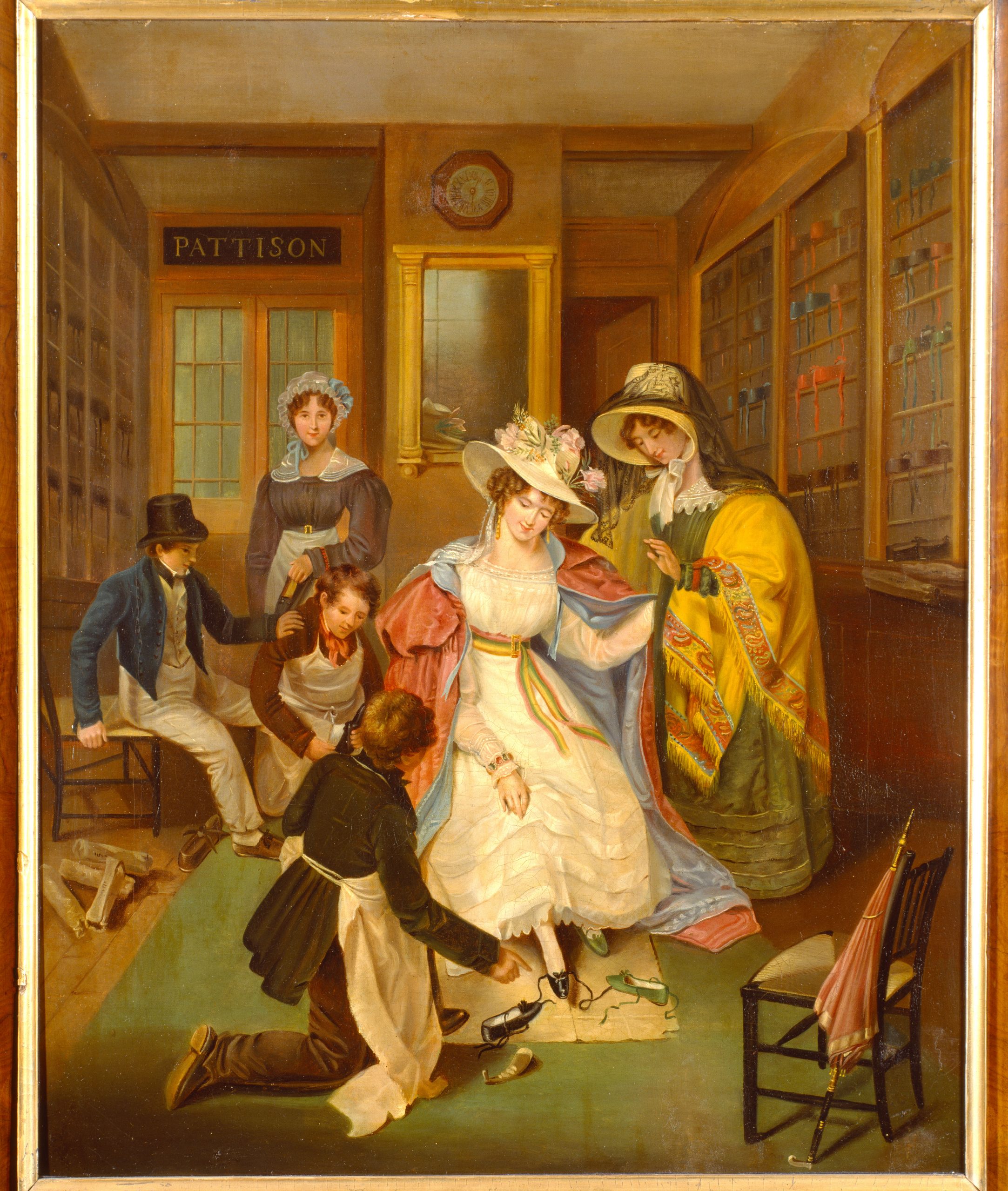
Oxford Street’s transformation into a chic shopping street happened very fast, beginning exactly 250 years ago. The key was the making of the New Road, now Marylebone Road, which allowed commercial through-traffic to bypass the street.
Once that was complete, a new paving commission took over the street’s management in 1770. It was promptly resurfaced with granite blocks by the firm of Adams and Campbell — a sideline of the famous Robert and James Adam, always alert to business opportunities, who were developing Portland Place at the time.
Meanwhile, the Tyburn processions had been tamed. The gallows were shifted north from the old location in 1759 and executions ended in 1783. Shopkeepers piled in to serve the gentlefolk of Mayfair and Marylebone. To cash in on the street’s redeemed status, James Wyatt built the Pantheon — an evocation of its famous Roman namesake — which opened in 1772 to acclaim as a place of entertainment for the fashionable classes.
The German novelist and travel-writer Sophie von la Roche, visiting England in 1786, bore witness to these changes. She was enthralled by ‘a street taking half an hour from end to end, with double rows of brightly shining lamps, in the middle of which stands an equally long row of beautifully lacquered coaches, and on each side of these there is room for two coaches to pass one another; and the pavement, inlaid with flagstones, can stand six people deep and allows one to gaze at the splendidly lit shop fronts in comfort’.
Especially magical for her were the brand-new shop fronts of the glass-sellers and lamp-sellers, and the confectionery and fruit stands. Such colour, glamour and ordered display of luxury had no equivalent back home in Frankfurt.
In that first phase of Oxford Street’s commercial glory, the shops were small, generally only one house wide. Curiously, Sophie does not mention that the dominant trade was clothing — drapers, tailors, haberdashers, furriers, silkmen and the like. That was to continue; clothing is still the staple of all major shopping streets and centres. A charming painting of the 1820s shows an Oxford Street shoe shop, a boutique in modern terms, with one pretty customer in the centre of the room.
In the 19th century, shops broke out from these constraints. One line of progress was the bazaar. Oxford Street’s biggest was the Pantheon Bazaar, created out of Wyatt’s redundant Pantheon in 1834. But the real future lay with the leading drapers, who extended their range of wares and gobbled up neighbour after neighbour until they began to be called department stores.
The pioneers in this process were Marshall and Snelgrove and Peter Robinson, followed by John Lewis (now the sole survivor of this phenomenon), D. H. Evans and others now forgotten.
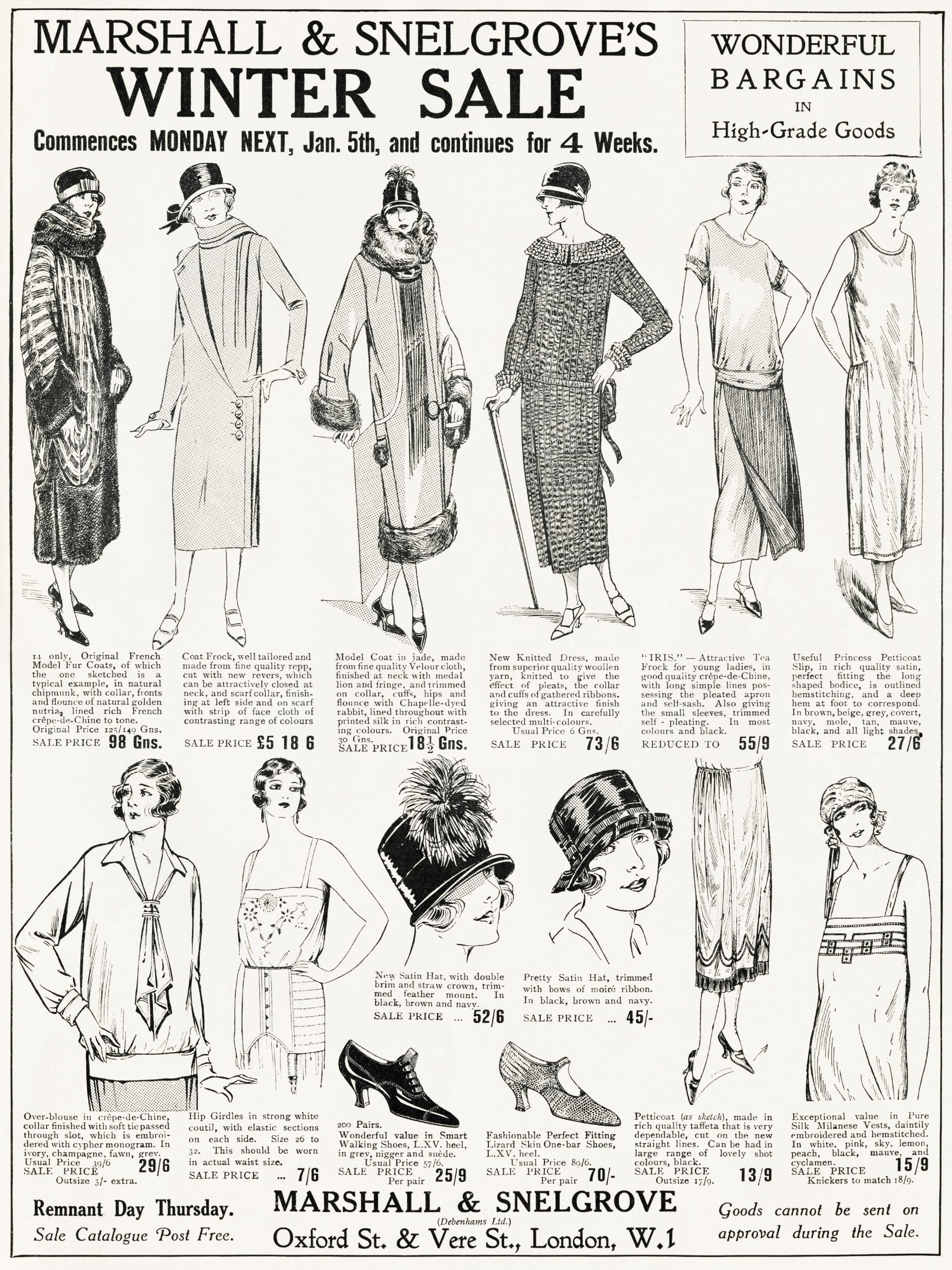
The early department stores were ramshackle creations that pulled together smaller existing units and accommodating shopping on two floors at most. In Victorian times, some 250 assistants lived on the upper floors of Marshall and Snelgrove, but as Oxford Street space increased in value, the assistants were relegated to hostels in minor back streets.
The big stores vied for grand clients. Louis-Philippe of France is said to have bought tartan velvets from Marshall and Snelgrove in 1844. Twenty years later, there was a sensation when the ‘pocket Venus’, Lady Florence Paget, was dropped by her fiancé at the same store’s front door and walked straight through to the side street, where she was whisked off to be married to the Marquess of Hastings at St George’s Hanover Square.
Oxford Street’s heyday was the Edwardian period. The arrival of the Tube — first, in 1900, the Central Line, with four stops on the road, rapidly followed by the Northern Line at Tottenham Court Road and the Bakerloo Line at Oxford Circus — completed the street’s transition from a chic shopping parade to a hub for retailing accessible to all London and beyond.
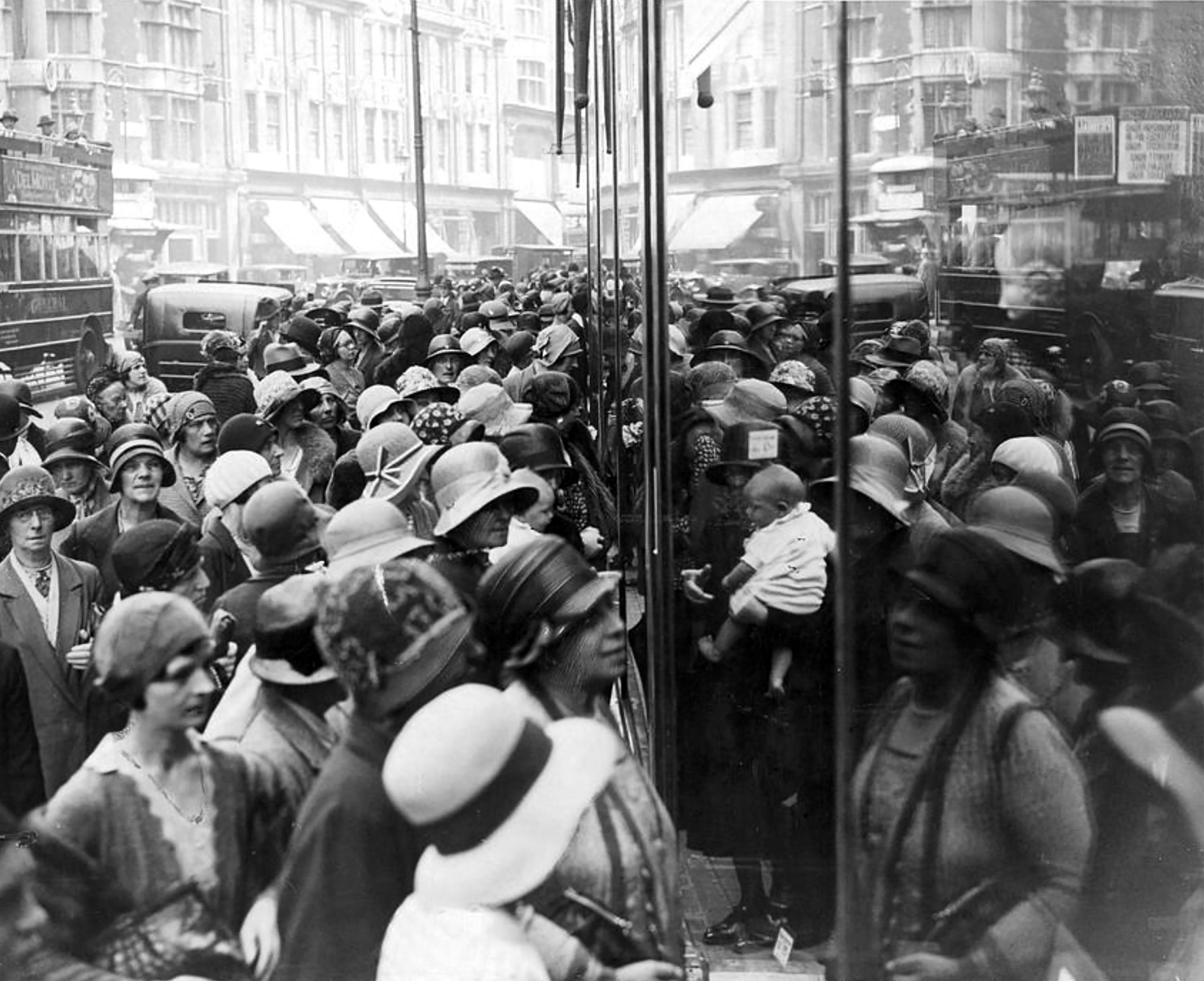
D. H. Evans and John Lewis rebuilt and new department stores shot up. Among them were Bourne and Hollingsworth (Nos 116–132) and the red-brick Waring and Gillow in ‘Wrennaissance’ style (Nos 164–182), both still there in carcase.
The latter, designed by R. F. Atkinson, was a shopping palace by every measure, its front a blown-up version of Hampton Court. As completed in 1906, it boasted 100 galleries, 800 windows, 10,000 incandescent lamps, a dome half the width of that surmounting St Paul’s Cathedral, 18 elevators and a full visitor route 2¼ miles long. The Kaiser came to shop there soon after it opened.
Even this opulence was eclipsed by Selfridges, which outdid its American and French counterparts in monumental Classical grandeur. Harry Gordon Selfridge brought American vision and panache to his great new creation, which was begun in 1908.
The first designs were drawn up by the celebrated Chicago practice of D. H. Burnham & Co and completed by stages, involving several architects. Selfridge fervently believed that his store was for education and uplift, as well as for shopping. Here the public could elevate its taste, take refreshment and practise golf or even shooting in the roof garden.
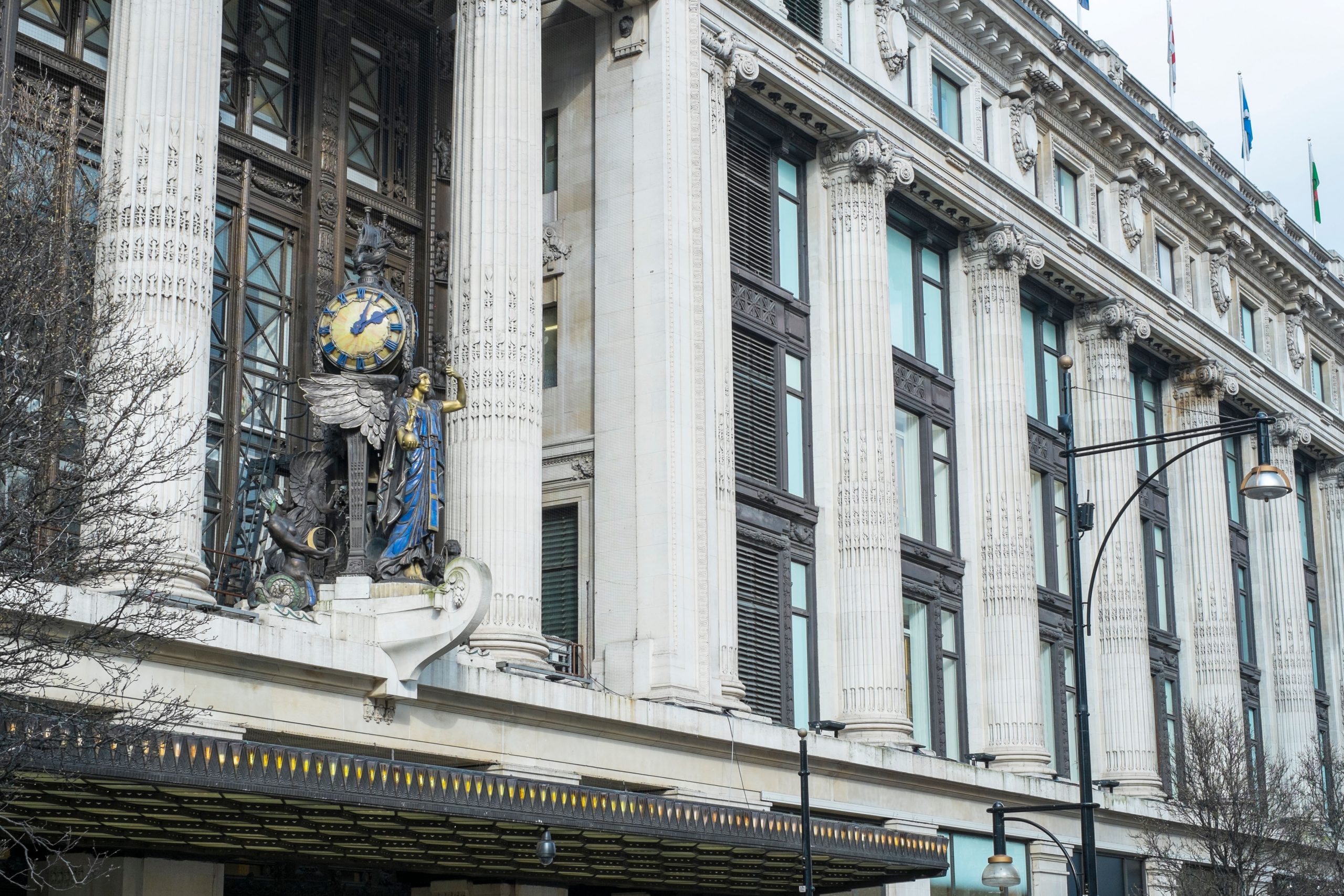
In subtler form, this rich Edwardian stone architecture extended to Oxford Street’s lesser shops. Some are still there to be admired, if the passer-by takes the trouble to look above the coarse modern shop fronts: for instance, the former Mappin and Webb’s plate and cutlery shop of 1906–08 by J. J. Joass, clad in Pentelic marble (Nos 150–154), and another fine block on the north side by the architects Adam and Holden in 1908–10 (Nos 54–62).
Between the wars, the ‘multiples’ took the lead. Woolworths, C & A and Marks and Spencer all arrived. Architecturally, there were still impressive efforts: Marks and Spencer rebuilt on the Pantheon site in a slick black style; D. H. Evans (now House of Fraser) followed suit in an idiom all its own by Louis Blanc in 1935–37; and an exotic frontispiece completed Selfridges, with noble sculpture by Sir William Reid Dick and Gilbert Bayes’ crowning Queen of Time.
At Oxford Street’s west end came the suave Mount Royal complex of hotel and flats by the architects Burnet, Tait and Lorne of 1933–34, and Hereford House, an enormity fronted in 1928–30 by Lutyens.

The best individual shop was the modernist Joseph Emberton’s His Master’s Voice of 1938–39 (Nos 363–367), now sadly out of service. Elsewhere, Art Deco shopfronts were the rage, all now destroyed.
Visually, Oxford Street since 1945 has been a disappointment. That mirrors the values of retailing, in which the balance sheet and the rationalisation of space veto individuality. John Lewis made a real effort in rebuilding after its premises were mostly destroyed in the war, one of relatively few badly damaged buildings on the street. The result, by Slater and Uren, of 1958–60 falls just short of a masterpiece, but a fine Barbara Hepworth sculpture, Winged Figure projecting from on one flank, is not to be missed.
Later blocks tend towards banal over-glazing, as shop fronts and window dressings are fitted with the certainty that they will be ephemeral. The oddest of recent experiments has been Park House (Nos 455–497) opposite Selfridges, resembling a beached whale.

Oxford Street’s surviving department stores look precarious today. Yet the shoppers pile in every afternoon, much younger now than they were 50 years ago, as pictures of the street scene then and now attest. Their preferred type of shop at present is the small-scale chain store.
The advent of yet another Underground connection, the Elizabeth Line with two stops proposed for the street, seems a guarantee of confidence for the future.
Will Oxford Street be a Mecca for shopping in another 250 years? It would be folly to bet against it.
‘Survey of London Volume 53: Oxford Street’ is published on April 14 by Yale University Press for the Paul Mellon Centre at £75
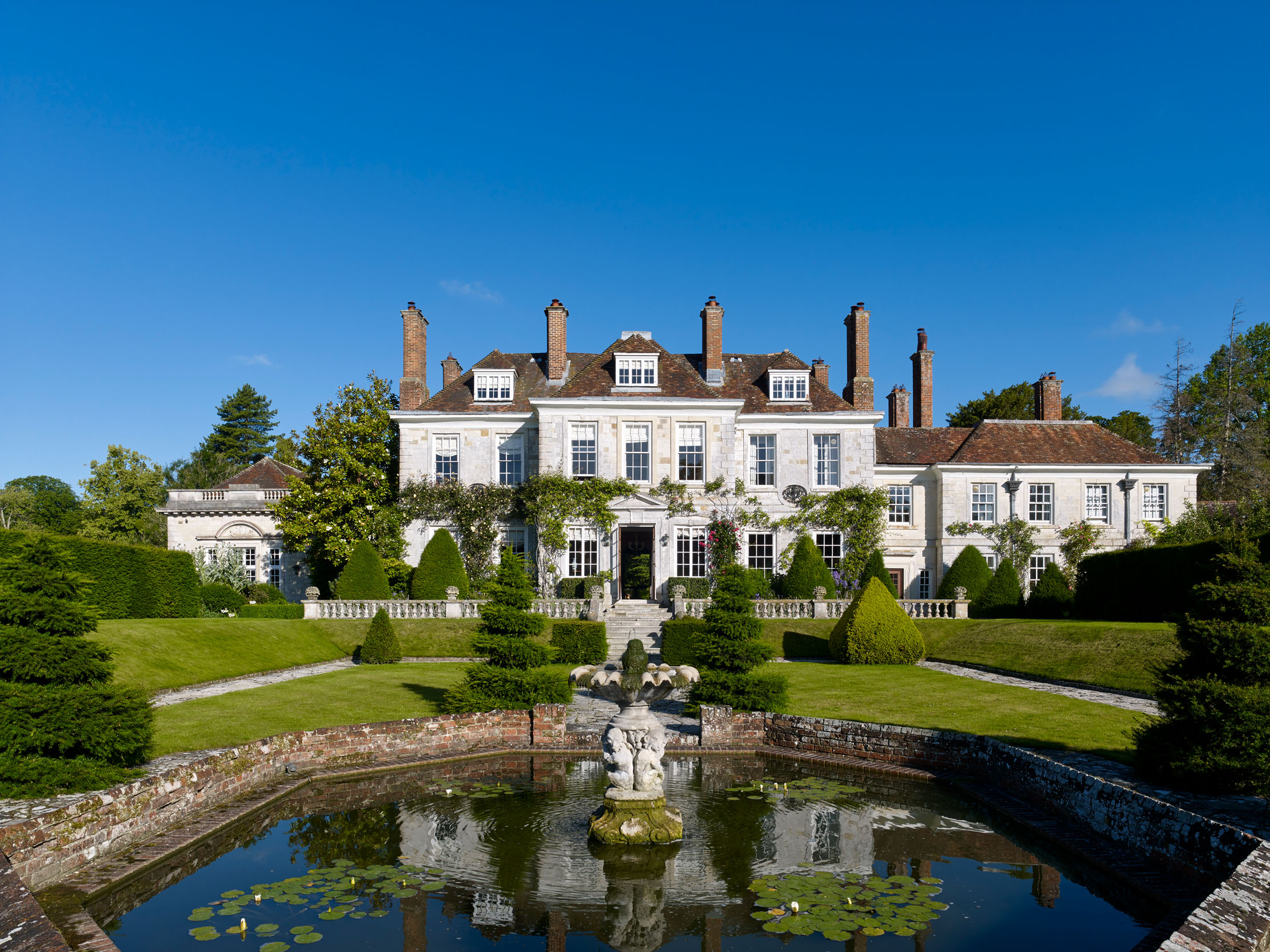
Shawford Park, Hampshire, an idyllic 17th century house by the river where 'the old and the new spark off each other'
John Goodall visits Shawford Park, Hampshire, the home of Peter and Elisabetta Mallinson, and finds an idyllic 17th-century house set
Country Life is unlike any other magazine: the only glossy weekly on the newsstand and the only magazine that has been guest-edited by His Majesty The King not once, but twice. It is a celebration of modern rural life and all its diverse joys and pleasures — that was first published in Queen Victoria's Diamond Jubilee year. Our eclectic mixture of witty and informative content — from the most up-to-date property news and commentary and a coveted glimpse inside some of the UK's best houses and gardens, to gardening, the arts and interior design, written by experts in their field — still cannot be found in print or online, anywhere else.
